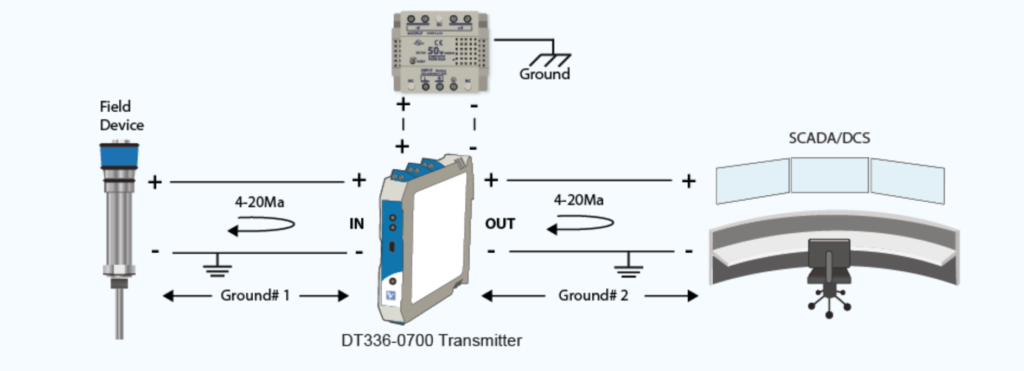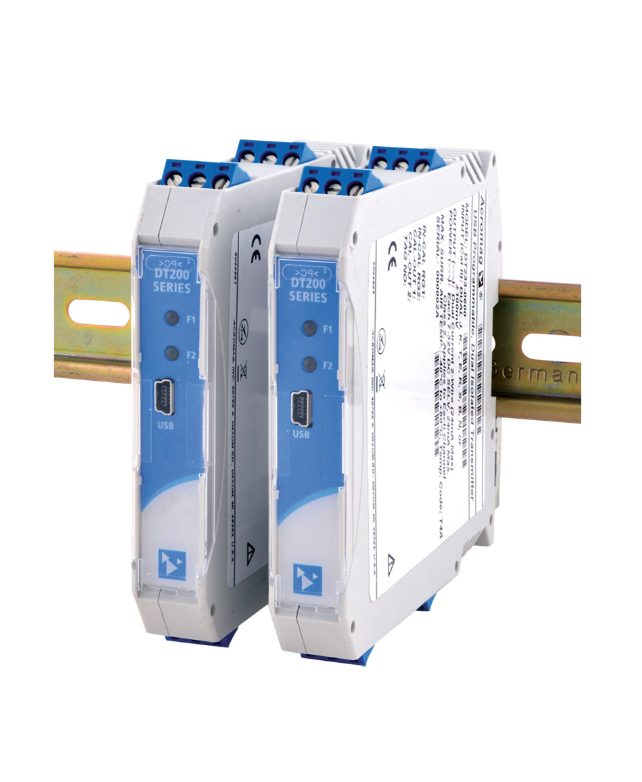Selecting The Right Signal Isolator
It’s important to know what to look out for when selecting a signal isolator for your project. This article goes through some key points to consider. But first, let’s start with some basics.
What are Signal Isolators For?
Signal Isolators typically eliminate ground loops between two or more pieces of equipment. For example, A signal isolator can be used to isolate control room equipment such as computers and DCS from field devices with different ground potentials. In this scenario, signal isolators protect control room equipment from damaging transient spikes and field noise caused by a variance in the ground potentials.
Signal Isolators also provide electrical isolation between input and output circuits. As a result they eliminate bucking power supplies, protect equipment from transient spikes and break ground loops between instruments. Let’s take a look at each of these potential hazards and why they’re important.
Bucking Power Supplies

Bucking power supplies occur when two or more devices try to provide power to a 4 to 20 mA loop. A passive input and output isolator is perfect to get around this. This isolator allows users to use the 4 to 20 mA loop without power wires. Examples of passive input and output isolators by Acromag include the TT236-0600, DT236-0600 and 651T-0600.
Electrical Surges

Electrical surges are the result of variable speed drives, pump motors, equipment startups, shutdowns or lightning strikes. These surges can damage or destroy sensitive control room equipment. Repairing such equipment can cost thousands of dollars. A way to prevent this is to use isolators that filter most noise. For example, in the event that lightening strikes, the isolator protects equipment from damage or destruction.
Ground Loops

Unintended induced current in a single loop is a ground loop. Multiple grounds have the potential to cause ground loops. This is especially true when the distance increases between the grounds. This is because earth at different locations carries different absolute potential. Furthermore, a control loop grounded in multiple spots will contain a conductor between both potentials. This results in induced currents as a result.
An isolator helps avoid ground loops by physically breaking the conductor running between both locations while still retransmitting the signal. Many Acromag isolators can accomplish this by creating seperate loops. Thus isolating the two locations as a result.
How to Choose the Right Signal Isolator
Choosing the correct and most cost effective signal isolator for your application requires a good understanding of your project. The first thing you should consider when trying to choose the right signal isolator is where the power for your apparatus is coming from.
Next, knowing things like what sensors are used, if field loops have an auxiliary power supply or if an active controller is present is also helpful. Knowing these specifics about your project is vital in helping you choose between the three main categories of signal isolators (listed below).
Three Main types of Signal Isolators to Consider
The following signal isolators are the three main types that most people will consider when trying to buy the right one for their application.
1. Output Loop-powered
These isolators use power from the output loop, not a separate PSU. This product is perfect for bucking power supply applications. This is because it has a sinking input and output.
2. Input Loop-powered
If AC or DC power is unavailable where this device needs to be mounted then the input loop-powered isolator is right for you. It’s important to note that this product does require the input signal source and load of the output field device to power the isolator.
3. Externally Powered
An external source powers these isolators. As a result, they place a very small burden on the loop. To top things off, these isolators also have sourcing outputs and sinking inputs. Finally some externally powered signal isolators also come with an excitation power source. As a result, the’re able to provide power for a two-wire field device.
Isolated Splitters
After answering the details listed above you may want to consider if two or more devices are wired together to track the same signal in your application. If so, you will want to isolate them from each other. This is important because if one device experiences a surge or noise it can be pass it to the other. Alternatively, neither loop could receive a signal if the loop is broken due to one device being down for maintenance.
If any of these scenarios sound like something your project could encounter an isolated splitter could be your answer. This is because they have a signal input and to identical outputs. Acromag offers the following isolated splitter models which you may want to consider: SP236-0600 and 653T-0600 or their externally powered models 633T-0100 (AC), SP336-0700 (DC) and 633T-0500.
Flexible Configuration
Finally, don’t forget to consider flexibility and configuration. Configuration options include the ability to increase filtering in noisy environments, corrections for sensor errors and changing the output to a voltage signal. You may also want a unit that has no configurations. The advantage here is that you know how it’s configured and can easily replace it if required.
We carry a huge range of Acromag signal splitters. Whatever your electrical isolation needs are you’l be sure to find a suitable solution within our range.
Contact Us
Please contact us here if you’d like to learn more about this product or our range of Signal Isolators.
